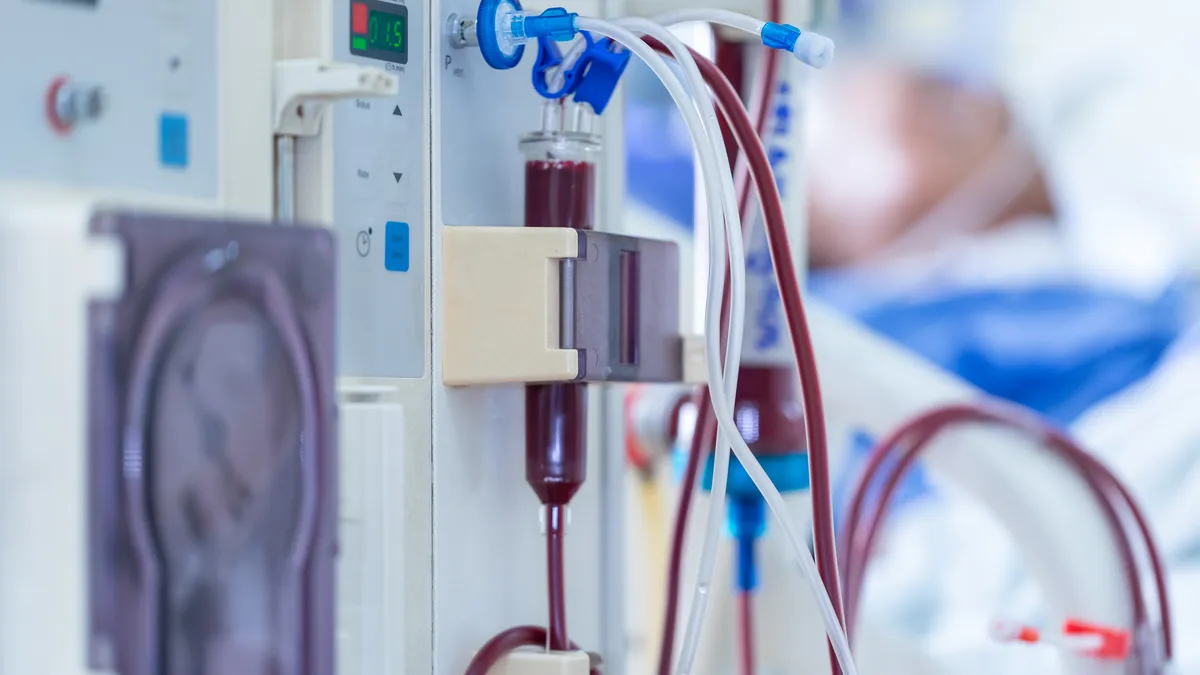A decline in mergers and acquisitions in the medical device industry this year may continue into 2023 amid “near-term storm clouds” that include continued market uncertainties, according to a report by consulting firm EY.
In the 12 months ended June 30, 2022, the number of deals signed in the sector fell to 252 from 288 in the year-earlier period, even as total transaction value increased 12 percent, the report found.
The drop in dealmaking may extend into 2023, according to EY Life Sciences Partner John Babitt.
“Continued uncertainty in the overall financial markets continues to weigh on the M&A appetite; the overall MedTech M&A and innovation ecosystem continues to remain intact, but near-term storm clouds are likely to pause transactions volumes into 2023,” he said.
Investments and exits, in the form of IPOs and mergers, also have slowed as companies face more business uncertainties, the report found.
Lower stocks, investments and exits
At the start of 2022, the composite share price for medtech companies with revenues of more than $500 million had increased 47% from the start of 2020, the EY report found. By the end of July, the shares gave up some of those gains and was up 14% compared to 2020.
Declining share prices led to lower investment levels and fewer exits for medical device companies in 2022. Investment levels, which include IPOs and venture and debt funding, dropped 30% for the 12 months ending in June 2022 compared to a year earlier. Firms with less than $500 million in revenue saw a steeper cut, with the amount of capital raised falling 35% in the 12-month period, according to EY.
“Over the last six months… the M&A space has really kind of paused for lack of a better word,” Babitt said. “We’re seeing a lot more of those privately held companies defer sale processes, raise additional venture capital, and really pin their sights on 2023.”
For the 12-month period ended in June 2022, medtech companies closed M&A deals worth a combined $77 billion. Most of the dealmaking took place in the final two quarters of 2021, with that period accounting for 70% of the value and 55% of the deal volume, according to EY.
While medtech companies have expressed an interest in acquisitions, that hasn’t resulted in many deals. In Johnson & Johnson’s recent third-quarter earnings call, CFO Joe Wolk said the market volatility has made M&A more challenging, with potential sellers “holding on to 52-week highs or all-time highs which, quite frankly, aren’t too distant in the rearview mirror.”
EY’s Babitt said medtech companies have been jettisoning some of their lower-growth or lower-margin businesses that don’t fit their long-term strategy. Some planned spinoffs include J&J’s consumer health business, GE Healthcare and 3M’s healthcare business. Medtronic announced on Oct. 24 its second spinoff this year, bundling its patient monitoring and respiratory units into an unnamed new venture.
“But we haven't seen the other leg of that stool, which is to really hit the gas on the buy side,” Babitt said.
Interest in software
The handful of standout deals so far in 2022 have mostly involved software companies. In February, Stryker acquired health software company Vocera Communications for $3 billion, and in June Becton Dickinson announced plans to buy pharmacy automation company Parata Systems for $1.5 billion.
“Most of the medtech companies that we interact with believe that digital therapies or migration of care outside of the hospital into the ASC, into the home, is where the future of medtech is migrating,” Babitt said.
And many companies also don’t have the capabilities to sell direct to consumers, or to set up an app and bill a physician, he said.
“A lot of these are new capabilities,” Babitt added. “So we've seen a number of organizations go the partnership route.”
FDA Outlook
Despite the slowdown in investment, there’s are some silver linings for medtech companies going forward, the report found.
The Food and Drug Administration is on track to have the highest number of 510(k) clearances in a decade, having awarded the designation to just over 1,800 devices in the first half of 2022.
For all of 2021, the FDA awarded almost 3,000 510(k) clearances.
The surge in clearances likely is due to the FDA clearing a backlog of filings that had accumulated during 2020 and 2021 because of the volume of pandemic-related submissions.
As the agency moves back toward business as usual, and with companies bolstering their R&D spend in 2021, it points to “a healthy sign of confidence in, and commitment to” the industry’s ability to keep innovating, the EY report said.
At the same time, EY Global Medical Technology Leader Jim Welch said in a call with reporters that despite economic challenges that include rising inflation and continued supply chain challenges, the medtech industry is poised to weather these obstacles.
“It's going to be a bumpy period over the next few months, but there's also some really encouraging signs around the strength of the industry, and the fundamentals related to the investment in R&D and other capital,” Welch said. “It's a resilient industry as we well know and have learned for the past few years. So we expect that spirit of resiliency to continue despite what's going on on the economic side.”




















